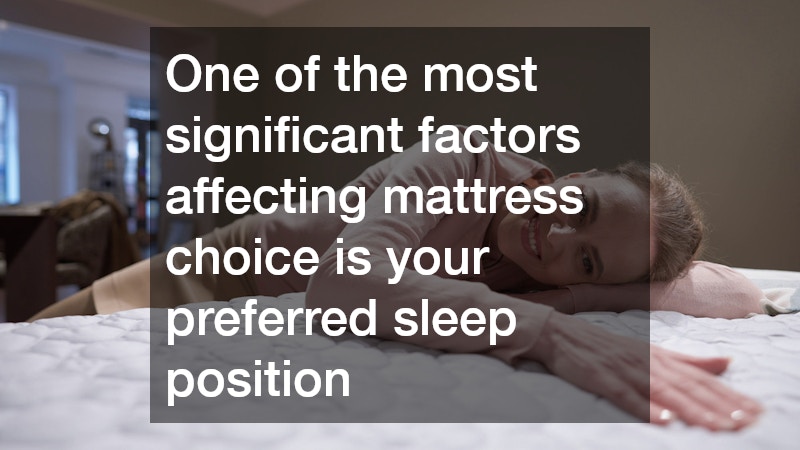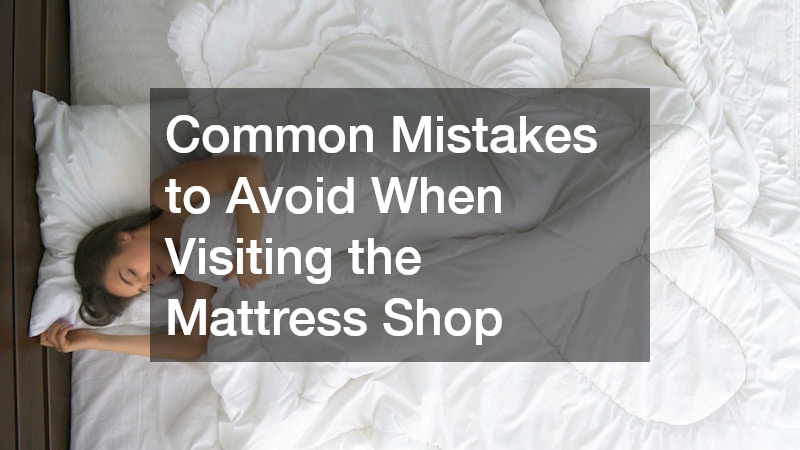It can be helpful to understand the common mistakes consumers often make when visiting the mattress shop. Read on for more insights on how to avoid them.
Shopping for a new mattress can be an exciting opportunity to improve your sleep quality and overall well-being, but it’s also a purchase that requires careful consideration. With so many materials, firmness levels, and price points to choose from, it’s easy for buyers to feel overwhelmed and make costly mistakes.
Rushing the decision, ignoring personal comfort needs, or overlooking return policies are just a few common missteps that can lead to restless nights and buyer’s remorse. Understanding what to avoid when visiting a mattress shop helps you make a more informed choice—ensuring that your investment supports years of restful, rejuvenating sleep.
Not Testing the Mattress Properly
Many shoppers make the mistake of not spending enough time testing the mattress in-store. A mattress is a significant investment for your health and comfort, and it requires thorough testing. It’s crucial to lie down on different mattresses, experimenting with various positions to gauge comfort and support.
Often, consumers feel rushed during the shopping process, which can lead to inadequate testing. Ideally, you should spend at least 10-15 minutes on each mattress. This allows you to simulate your typical sleep habits, whether you are a side sleeper, back sleeper, or stomach sleeper, to find the best match for your needs.
Furthermore, it’s recommended to try out mattresses at different times of the day. Our bodies might feel different depending on time, fatigue, or physical activity. Engaging in this thorough and patient testing can prevent a regretful purchase down the line, leading to better sleep and more restful nights.
Ignoring Your Sleep Position
One of the most significant factors affecting mattress choice is your preferred sleep position. Shoppers often overlook this crucial element, leading to potential discomfort. Various positions require different support levels to maintain proper spine alignment.
For instance, back sleepers typically benefit from a medium-firm mattress that supports the natural curvature of their spine. Side sleepers, on the other hand, may require softer options to relieve pressure on the shoulders and hips. Ignoring these sleep position needs can result in poor sleep quality and discomfort throughout the night.
Ultimately, it’s important to acknowledge how your sleep position affects your comfort. Before purchasing, consider your sleeping habits and test mattresses that cater specifically to your preferred position. This careful consideration will lead to a more satisfying mattress choice in the long run.
Focusing Only on Price
While budget is undoubtedly an important factor, concentrating solely on price can lead to poor quality and long-term discomfort. Shoppers often feel tempted to choose the cheapest mattress available, not realizing that a mattress is a crucial investment in their health and well-being.
Understanding the value of a good mattress can significantly influence your purchasing decision. A well-constructed mattress can last for years and offer better support, leading to improved sleep quality. A mattress that seems expensive initially may prove to be cost-effective when considering its longevity and your comfort.
Therefore, it is essential to balance your budget with the quality of the mattress. Consider investing slightly more in a mattress that fits your needs, rather than settling for the cheapest option. A good mattress contributes to better sleep, which is invaluable to your overall health and daily life quality.
Not Considering Mattress Maintenance
Potential buyers often overlook the upkeep and longevity of the mattress during their shopping experience. Different materials and constructions require various levels of care, which can affect durability and performance over time. This aspect should be carefully considered before making a purchase.
For example, memory foam mattresses usually need less maintenance but can require specific cleaning processes. On the other hand, innerspring mattresses may need regular rotation to ensure even wear. Understanding these maintenance needs can be crucial in maintaining a healthy sleep environment.
In addition to regular maintenance, investing in protective accessories like mattress covers can prolong the life of your mattress. Considering these factors not only increases the lifespan of your bed but also contributes to your overall sleeping experience, ensuring nights of comfort for years to come.
Relying Solely on Salesperson Recommendations
While salespeople can provide valuable insights regarding mattress features, relying entirely on their recommendations can be misleading. It’s essential for consumers to conduct their own research and enter the mattress shop prepared. This approach often leads to more informed decisions that better suit individual needs.
Knowing the specific types of mattresses and their key features enables you to ask informed questions and decipher the information received. Plus, understanding various materials and their benefits allows you to critically assess what the salespeople suggest. Education is key to making a wise mattress investment.
Besides, it’s beneficial to incorporate online reviews and consumer feedback when evaluating mattresses. This research equips you with a broader perspective on potential options available, allowing for a more balanced and comprehensive choice in selecting the right mattress that aligns with your sleep requirements.
By avoiding these common mistakes, you can ensure a better mattress shopping experience that leads to a more restful night’s sleep. With thorough testing, consideration of sleep positions, balanced price evaluation, proper maintenance understanding, and independent research, your journey to choosing the perfect mattress will be fruitful.

